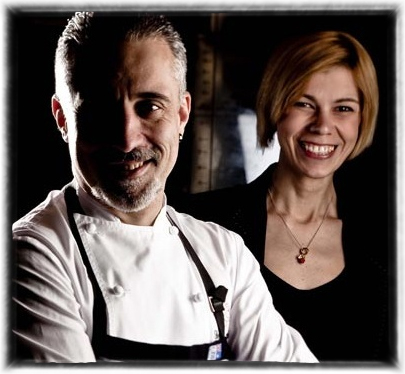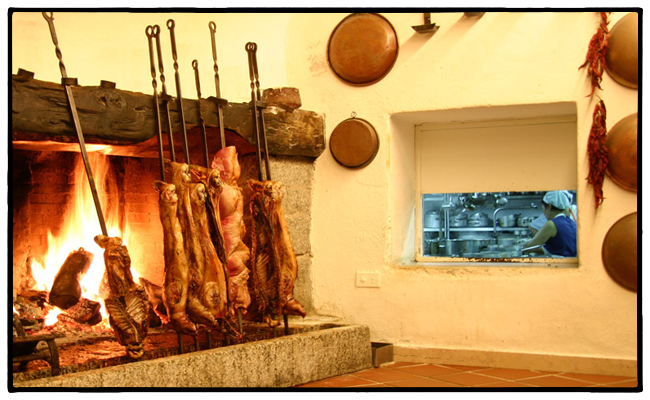Last night Lisa Abend, who wrote a book last year, The Sorcerer’s Apprentices, about spending a year in the kitchen at Ferran Adrià’s elBulli, and I joined the Marques de Griñon and his daughter, Xandra, for a dinner that, for me, really epitomized the whole Madrid food scene these days.
For one thing, our reservation at Sergi Arola Gastro was at ten. For another, it proceeded slowly, like an ancient wedding feast, and lasted almost five hours. In between, we indulged in a numbing array of dishes—12? 15?—I lost count—along with an all-star lineup of wine from nearby producers like Qubél (a visitor-friendly bodega half-an-hour south of Madrid in Pozuelo del Rey), Real Cortijo (a historic winery near Aranjuez founded by Carlos III in 1782), and a superb Cabernet Sauvignon from the Falcos’ own Dominio de Valdepusa.
Chef Arola is intrigued with reinventing rather than replicating Spanish cuisine, presenting a tapa of fresh sardines, for instance, on top of al dente haricots enlivened with garlicky Mallorcan sausage called sobresada, or taking a single sautéed scallop and floating it in a sort of vichyssoise made from a relative of the leek, calçot, grown around the town of Valls in Catalunya. We also had a dish of salty hake, a gratin of sole, and a roast of venison spiced with a Moroccan rub. Followed by several desserts, petit-fours, a 30-year-old sherry, and, eventually coffee.
Sometime after 3 a.m. I begged Sara, Sergi’s wife, who runs the front of the restaurant, to call us a cab. As the rock-star chef and his wife stood with Lisa and me in front of their restaurant, I asked them, only half-kidding, how they did this every night. “We sleep in,” said Sara. And then Sergi shrugged and said, “I never get tired of this. Being with friends, making and serving beautiful food—it’s what we live for. To us, food is life.”
Still, I thought as I crawled in to our cab, satiated and exhausted in equal measure, I don’t know how they do it. I could barely keep my eyes open.
“Hey, what do you say we stop at La Soleá on our way home?” Lisa said in the cab just as I was falling asleep.
Why not? In Madid, the night is still young. Besides, Picasso’s Daughter might still be singing.






Recent Comments